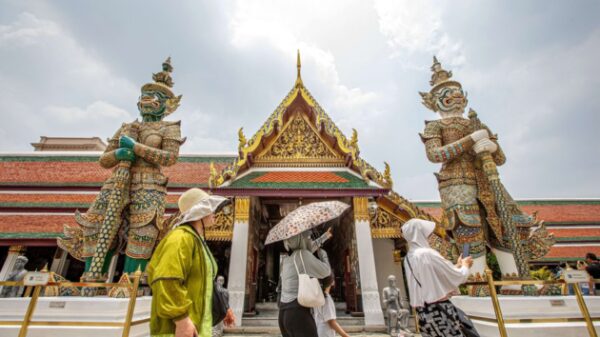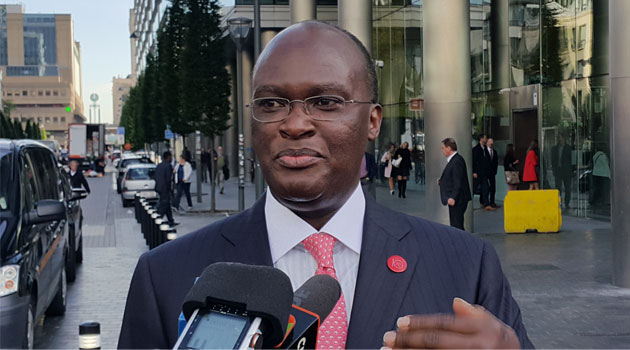BRUSSELS, Belgium, Jun 19 – He describes it best, “If you go to Mombasa today getting out is a big, big problem and so as we discuss about railway coming from Mombasa to Nairobi, the trucks, the buses, saloon cars is a nightmare (sic).”
While in Brussels Transport Cabinet Secretary James Macharia sat down with Kenyan reporters to discuss the National government’s plans to improve traffic flow in Nairobi in the wake of Tanzania’s unveiling of DART (Dar Rapid Transit) bus system and Addis Ababa’s light rail.
He discusses the challenges unique to Nairobi and admits the infrastructure projects currently being fast-tracked by the Jubilee administration should have been undertaken two decades ago if Nairobi were to truly claim the ‘gateway’ title.
What infrastructure projects are being discussed on this trip to Brussels, the EU headquarters?
Before I respond on the new projects which have been agreed during this visit, I think it’s important to put into context the support given to us by the EU and European Investment Bank both historically and ongoing. In terms of the historic support you recall there’s a project called EU Roads 2000. This basically is a programme which is supported by the European Union by way of grants up to 20 million Euro which is about Sh3 billion to support paving of roads in Lower Eastern, in particular we have the counties of Machakos, Makueni, Embu, Tharaka Nithi and Meru. Now this key programme basically supports the rural sector which as you know is very critical in terms of our development.
Then we have a road called Merille-Marsabit road which has been supported also by the EU in terms of a grant. Total cost of the project is Sh13.7 billion. Out of that the EU provided a grant of Sh8.7 billion. That project is 90 per cent complete and we anticipate the 121 kilometre road will be open by October this year.
Then we have other roads which are either ongoing or complete. Number one we have a road called Eldoret-Webuye, also supported by the EU by way of a grant, total cost is Sh5.5 billion shillings; grant from the EU Sh4 billion. Then to continue with that road we have Webuye-Malaba. Total cost Sh6 billion, supported by EU by way of a grant of Sh4.5 billion shillings.
So now to come to your question. This big road of Mombasa-Mariakani. If you go to Mombasa today getting out is a big, big problem and so as we discuss about railway coming from Mombasa to Nairobi, the trucks, the buses, saloon cars is a nightmare and so we gave this project a priority and so we’re doing it in two phases. Phase 1 which is coming from Mombasa town to a place called Kwa Jomvu is about 11kms costing about 112 million Euro which is if you calculate about Sh15 billion. Then from Kwa Jomvu we go to Mariakani which is now the project we have been discussing with the EU, in particular with the European Investment Bank. It is critical this road because it will basically add to what I’ve just said phase 1 and in total length it’s about 41kms. The EU has committed to support this project to the tune of 137 million Euro which is about Sh18 billion. It is to be fantastic when it is completed because the first phase will start on Kenyatta Avenue Mombasa island, six-lane highway from Mombasa. Go for 11kms, and then from there it will be a 4-lane to Mariakani. You can imagine the difference it will make given what is happening right now in Mombasa so those roads are critical.
And then finally in terms of opening up North Eastern, in terms of opening up the corridors, we are trying to do a road from Lamu to Isiolo, then from Isiolo in terms of the LAPSSET corridor, we shall have one branch heading North Easterly towards East Moyale which is Ethiopia, then another branch from Isiolo going North Westerly towards Southern Sudan and these projects are supported by our partners including the EIB.




































